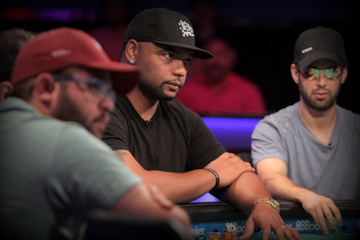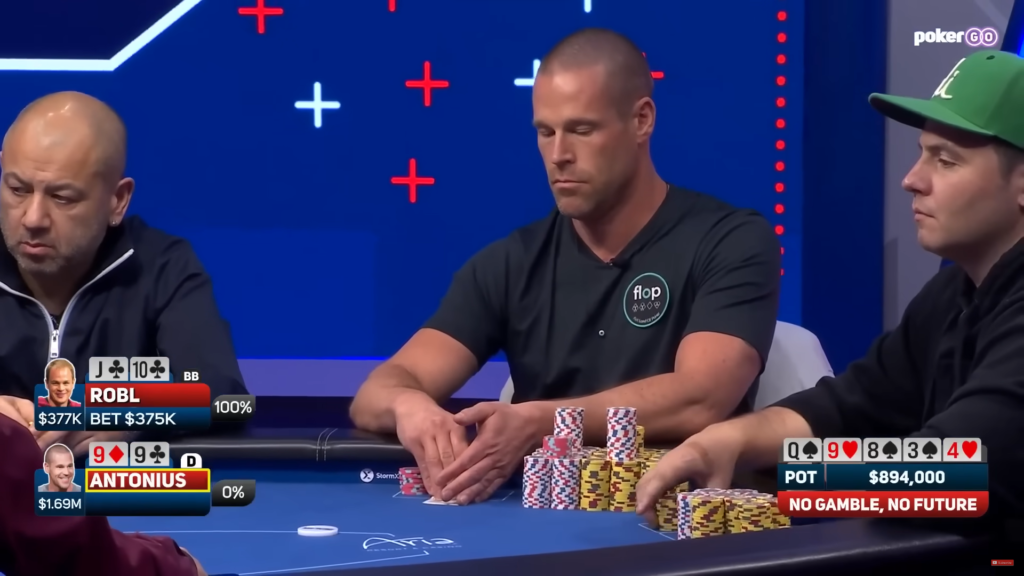Chiến lược chơi Poker hiệu quả
Triple Barrel Poker is a fascinating and strategic variant of poker that has gained popularity among players looking to elevate their game. This exciting form of poker emphasizes aggressive betting, psychological warfare, and the ability to read opponents. In this comprehensive article, we will delve into the intricacies of Triple Barrel Poker, from its rules and strategies to tips for successful gameplay. Whether you are a seasoned player or just starting your poker journey, this guide will provide valuable insights to enhance your skills and knowledge of the game.
Understanding Triple Barrel Poker

Triple Barrel Poker is recognized for its unique approach to betting, particularly in how players utilize multiple rounds of betting to maximize their profit potential. This section will explore the foundational aspects of Triple Barrel Poker, including its history, rules, and basic strategies.
History of Triple Barrel Poker
The roots of Triple Barrel Poker can be traced back to traditional forms of poker but have since evolved to create a distinct and modern variation. Its origins lie in the desire for players to engage in more strategic and complex gameplay, where betting patterns can influence the outcome of hands significantly.
As poker grew in popularity through televised tournaments and online platforms, players began experimenting with various styles and techniques. Triple Barrel Poker emerged as a favorite among many enthusiasts due to its emphasis on aggression and psychological tactics. Understanding the evolution of this poker variant allows players to appreciate its depth and complexity better.
Rules of Triple Barrel Poker
Learning the rules of Triple Barrel Poker is crucial for any aspiring player. While it shares similarities with classic Texas Hold’em, it introduces specific nuances that increase the game’s intensity.
In Triple Barrel Poker, players are typically dealt two hole cards, followed by five community cards revealed in stages. The primary feature that distinguishes this version of poker is the three separate rounds of betting—often referred to as the “three barrels.” Players must decide when to bet, raise, call, or fold based on the strength of their hand and their read on opponents.
Another essential aspect of the rules involves the importance of position at the table. Players in later positions have the advantage of observing their opponents’ actions before making their decisions, which can significantly impact the strategy employed throughout the game.
Basic Strategies for Success
To excel at Triple Barrel Poker, players must adopt fundamental strategies that align with the game’s aggressive nature. Here are some key principles to consider:
Aggression Pays Off: In Triple Barrel Poker, being aggressive with betting can pay off substantially. Players should focus on building pots when they have strong hands while applying pressure on weaker opponents. Bluffing becomes a critical element, especially when positioned favorably at the table.
Reading Opponents: A significant part of success in Triple Barrel Poker lies in the ability to read opponents effectively. Observing their betting patterns, body language, and reactions can provide invaluable insights into their hand strength. Skilled players often capitalize on these reads to make informed decisions throughout the game.
Pot Odds and Expected Value: Understanding pot odds and calculating expected value (EV) can improve decision-making during gameplay. Pot odds help players determine whether to call a bet based on the size of the pot relative to the bet amount. Evaluating expected value provides insight into the long-term profitability of various plays.
Advanced Techniques in Triple Barrel Poker
Once players grasp the fundamentals of Triple Barrel Poker, they can explore advanced techniques to refine their gameplay further. This section will cover some sophisticated strategies that experienced players employ to gain an edge over their opponents.
The Importance of Table Image
Players’ perceptions of your playing style, known as table image, can significantly impact your success in Triple Barrel Poker. Establishing a specific image allows skilled players to manipulate their opponents’ actions, leading to more favorable outcomes.
A tight-aggressive table image can be advantageous; when you finally decide to bluff, opponents may be more inclined to fold, believing you only play strong hands. Conversely, if you cultivate a loose-aggressive image, opponents might call you down more often, thinking you’re merely trying to push them around.
The Art of Bluffing
Bluffing is an integral component of Triple Barrel Poker, and mastering this art can distinguish a good player from a great one. Successful bluffing requires keen observation and an understanding of your opponents’ tendencies.
Timing is crucial when bluffing. Players should look for opportunities when the board texture favors their perceived range. For instance, if you’ve been betting aggressively and the community cards suggest a strong hand, opponents may be more likely to fold weaker holdings.
Additionally, considering your opponent’s stack size and previous actions can inform your bluffing decisions. If they show weakness or have smaller stacks, they may be more susceptible to folding under pressure.
Adjusting to Opponent Styles
Adapting your strategies based on opponents’ playing styles is vital in Triple Barrel Poker. Some players are overly aggressive, while others are more passive. Being able to identify these tendencies enables you to exploit weaknesses effectively.
Against aggressive players, it may be beneficial to tighten up your range and wait for premium hands to extract maximum value. Conversely, against passive players, you might want to apply pressure with bluffs and semi-bluffs to take down pots even when your hand isn’t strong.
Recognizing the dynamics between different player types allows for a more customized approach to each session, enhancing your chances of success.
Analyzing Post-Flop Play

Post-flop play is where the true test of skill occurs in Triple Barrel Poker. This section will focus on strategies and considerations for navigating the complexities of post-flop action.
Understanding Board Texture
The texture of the board—the community cards displayed—plays a significant role in shaping players’ strategies. Boards can be “dry” (few connected or suited cards) or “wet” (many draws and potential combinations). Recognizing the type of board you’re facing helps you assess the strength of your hand relative to potential opponent holdings.
On dry boards, players may feel more confident betting, knowing fewer hands can connect with the community cards. In contrast, wet boards may require a more cautious approach as numerous drawing possibilities exist.
Utilizing Continuation Betting
Continuation betting is a powerful tool in Triple Barrel Poker. After raising pre-flop, players often continue to bet on the flop to maintain the initiative. This tactic can force opponents to fold weaker hands, allowing you to claim the pot without a showdown.
However, it’s essential to gauge your opponent’s tendencies when employing this strategy. Against players who frequently call continuation bets, you may need to adjust your approach and incorporate the element of surprise in your future actions.
The Role of Player Reads
Post-flop play heavily relies on accurately reading opponents. Paying close attention to their betting patterns, timing, and demeanor can reveal crucial information about their hand strength.
For instance, if an opponent suddenly makes a large bet on the turn after checking the flop, it could indicate newfound confidence in their hand. Conversely, if they seem hesitant or take too long to act, they might be uncertain about their holdings. Using these observations to inform your decisions is a hallmark of a skilled player.
Managing Your Bankroll

Bankroll management is a critical aspect of poker that cannot be overlooked. In Triple Barrel Poker, where the stakes can escalate quickly, effective bankroll strategies are essential for long-term success.
Setting Limits and Goals
Before engaging in any poker games, players should set clear limits on how much they are willing to risk. Establishing a dedicated bankroll for poker and setting win/loss limits can prevent impulsive decisions that lead to financial strain.
Additionally, having specific goals—whether related to improving skills, achieving specific profit margins, or maintaining a particular winning percentage—can motivate players to remain disciplined and focused.
Evaluating Game Choices
Choosing the right games and stakes is paramount in bankroll management. Players should enter games that match their skill levels and bankroll size. Playing at stakes that are too high for your bankroll can result in unnecessary risk, leading to costly mistakes and potential ruin.
Regularly evaluating your performance and adjusting your game choices based on results is also important. If you’re consistently losing at a particular level, it may be wise to lower your stakes until you regain confidence.
Practicing Responsible Gaming
Responsible gaming practices are fundamental for anyone involved in gambling, including poker. Players should never risk more than they can afford to lose, and taking breaks or stepping away from the tables can help maintain a healthy mindset.
Engaging in responsible gaming also encompasses recognizing signs of problem gambling and seeking help if necessary. Creating a balance between poker enjoyment and financial responsibility is critical for sustaining a positive experience in the long run.
Building a Winning Mindset
A winning mindset is crucial for success in Triple Barrel Poker. Players must develop mental resilience, emotional control, and strategic thinking to navigate the highs and lows of the game effectively.
Embracing Emotional Discipline
Poker is as much a mental game as it is about skill. Developing emotional discipline allows players to stay focused and avoid making impulsive decisions driven by frustration or excitement.
Practicing mindfulness techniques and self-reflection can help players understand their emotional responses during gameplay. Recognizing when emotions arise and learning how to manage them constructively can lead to improved decision-making.
Cultivating a Growth Mindset
A growth mindset encourages players to view challenges as opportunities for improvement rather than obstacles. Adopting this mentality fosters a willingness to learn from mistakes and seek continual development.
Analyzing past hands, studying theory, and engaging with other players can facilitate growth within the game. Aspiring players should embrace the idea that mastery comes through practice, patience, and perseverance.
Setting Realistic Expectations
Setting achievable expectations is vital for maintaining motivation and satisfaction in poker. Players should recognize that losses are part of the game and not become discouraged by short-term setbacks.
By focusing on the process rather than solely on results, players can cultivate a healthier relationship with the game. Celebrating small victories, such as improved decision-making or successful bluffs, reinforces the positive aspects of the game.
Kết luận
Triple Barrel Poker là một trò chơi thú vị và chiến lược mà mọi người có thể tận hưởng. Với sự kết hợp giữa kỹ năng, tâm lý và sự kiên nhẫn, người chơi có thể học hỏi và phát triển trong suốt hành trình của mình. Bằng cách hiểu rõ quy tắc, chiến lược và quản lý ngân sách, bạn sẽ cải thiện khả năng của mình và đạt được thành công trong trò chơi này.
Hy vọng bài viết này đã cung cấp cho bạn những thông tin hữu ích và cảm hứng để tiếp tục khám phá thế giới của Triple Barrel Poker!





